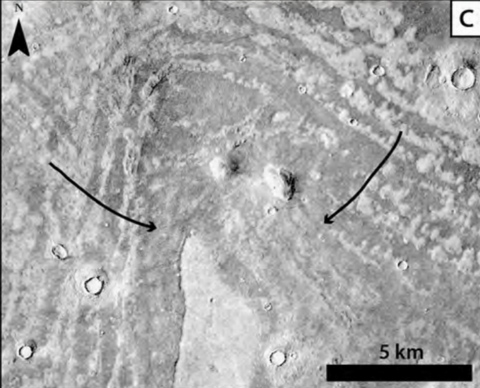
|
|

|
|
| April 18, 2024 |
|
Impact crater linked to Martian tsunamis 
Scientists have located an impact crater linked to powerful tsunamis that swept across part of ancient Mars.
The team believe an asteroid triggered huge waves when it plunged into an ocean thought to have existed on northern Mars three billion years ago. Lomonosov crater in the planet's northern plains fits the bill as the source of tsunami deposits identified on the surface. Details were outlined at the 48th Lunar and Planetary Science Conference. Although the idea has lost some of its currency in recent years, some scientists think an ocean might once have filled the vast lowland region that occupies the Red Planet's northerly latitudes. Growing evidence that tsunami waves washed over the boundary between the southern highlands and northern lowlands help strengthen the hypothesis. François Costard, Steve Clifford and colleagues identified and mapped the distribution of sediment that apparently originated in the northern plains and flowed onto a possible ancient shoreline to the south. "We found typical tsunami deposits along the dichotomy between the northern hemisphere and southern hemisphere of Mars," Dr Costard, from Université Paris-Sud and CNRS, told BBC News. "It supports that there was, at that time, a northern ocean." One type of feature seen on the dichotomy boundary is a lobate flow deposit. Dr Clifford, from the Lunar and Planetary Institute in Houston, explained the evidence. "These lobate deposits propagate uphill from the northern plains and do so in close association with a potential palaeo-shoreline. The predictions of the numerical modelling that François and his colleagues have done provide a very persuasive case for an ocean at this time," he told BBC News. Story Date: March 27, 2017
|